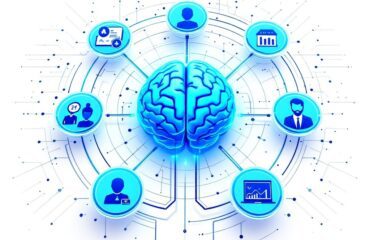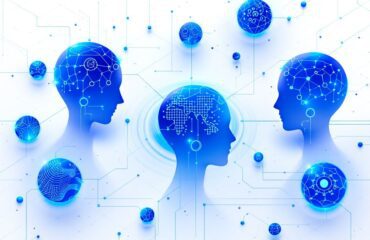The term AI in education is everywhere — in board meetings, conference keynotes, and faculty lounges. But beyond the buzz, educators face real questions:
- What should AI do in a school system?
- Where does it make a difference?
- How do we adopt it without losing the human core of teaching?
This guide offers a clear, grounded framework for integrating AI into your school or district — built on both data and practical experience. Whether you’re looking to streamline operations, support overwhelmed teachers, or personalize learning for every student, the goal isn’t just using AI — it’s using it well.
🚀 Why AI in Education Matters — Now
We’re not preparing students for a future with AI.
We’re preparing them for a future shaped by it.
That means teaching with AI, about AI, and beyond AI — ensuring schools aren’t left reacting to change, but leading it. When done well, AI integration results in:
- 📉 45% reduction in administrative workload
- 🔍 85% faster formative and summative assessments
- 🎯 70% increase in engagement when students get personalized feedback
- 💡 60% improvement in how instructional resources are allocated
But numbers alone don’t drive transformation. Mindset and strategy do.
🔧 Where AI in Education Makes a Real Difference
1. Smarter Administration
Free staff from repetitive tasks and redirect energy toward relationships.
- ✅ Enrollment automation
- ✅ Class scheduling with conflict resolution
- ✅ Digitized form processing
- ✅ Real-time data dashboards for attendance, behavior, and grading
Instead of manually inputting student schedules, schools are using AI to balance class sizes, learning needs, and teacher preferences in seconds.
2. Empowered Instruction
Not about replacing teachers — about making teaching more human by making the workflow less exhausting.
- 🧠 AI-generated quizzes, rubrics, and lesson hooks
- 📚 Differentiated reading passages, writing supports, and math problems
- 👩🏫 Data-informed instructional decisions powered by LMS-integrated insights
- 🤖 Virtual co-teachers offering 24/7 study support
Teachers report saving 2–5 hours a week on planning by using AI to generate, then refine materials — giving them more time to teach, connect, and reflect.
3. Student-Centered Learning
AI can adapt, scaffold, and stretch learners — when guided by educator intent.
- 🪜 Personalized pathways that respond to student performance
- 🗣 Support for multilingual learners (translation, rewording, voice tools)
- 🧩 Scaffolding complex tasks without diluting rigor
- 🗂 Visual and data-based goal tracking for students and families
A student doesn’t just “get a worksheet” — they get targeted practice at the right level, with hints or challenges that evolve in real time.
4. Equitable Communication & Community Engagement
AI tools bridge language, bandwidth, and accessibility gaps.
- ✉️ Automated parent messaging in multiple languages
- 📱 Voice-enabled apps for families without strong literacy skills
- 📊 Community dashboards and alerts for real-time updates
- 📅 AI-assisted event scheduling that avoids conflicts
AI helps schools speak every family’s language, not just metaphorically.
🎓 Real-World Transformation
📍Case Snapshot: AI Implementation in a Public High School
Before:
- Manual grading and tracking
- Paper-based scheduling
- Reactive student support
After:
- Auto-graded assessments + AI-supported feedback
- Smart scheduling reducing course conflicts by 50%
- Virtual AI tutors for after-hours help
- 65% increase in on-time assignments
Result: 80% less admin time for teachers. More energy for student feedback, parent meetings, and curriculum design.
🧭 A Four-Phase Integration Blueprint AI in education
🔍 Phase 1: Assess
- Technology audit
- Needs analysis
- Equity and access check
- Stakeholder readiness survey
🛠 Phase 2: Plan
- Tool selection based on actual classroom need
- Budget strategy (consider ROI, not just upfront cost)
- Timeline + training plan
- Communication strategy
🚀 Phase 3: Implement
- Start with a low-risk, high-reward pilot (ex: quiz generator or AI writing support)
- Train teachers with 15-minute “Try it Now” sessions
- Collect feedback early and often
🔁 Phase 4: Optimize
- Review analytics: who’s using it? What’s working?
- Adjust systems to better serve students and staff
- Scale thoughtfully — not everywhere at once
- Celebrate wins, correct course on misses
🧰 Essential Tools for Getting Started
| Type | Example Use Cases |
|---|---|
| LMS + AI Plug-ins | Personalized learning pathways, auto-grading, feedback |
| AI Planning Assistants | Lesson hooks, IEP-friendly activities, writing prompts |
| Communication Tools | Parent message drafting, school news translation |
| Analytics Dashboards | Resource tracking, intervention flags, goal visualization |
Don’t chase the shiniest tool — chase the clearest outcome.
🧱 Common Barriers (and How to Break Through)
| Barrier | What Works |
|---|---|
| Staff Skepticism | Invite teachers to co-design pilots; highlight real use cases |
| Equity Gaps | Prioritize multilingual tools, offline options, and shared access |
| Budget Concerns | Start with free tools; measure ROI early; explore grant support |
| Policy Confusion | Draft Acceptable Use Policies for staff & students; update regularly |
📈 Future-Proofing Your AI Journey
Success isn’t just about using AI today — it’s about sustaining thoughtful use tomorrow. Ask:
- 🧩 Is this scalable?
- 🔒 Are student privacy and data rights protected?
- 🧑🏫 Are all staff (not just “techy” ones) supported?
- 📣 Are families part of the conversation?
✅ Your Next Steps with AI in education.
1. Take the AI Readiness Self-Assessment
→ techminded.xyz/ai-readiness-survey
2. Identify a Pilot Opportunity
→ Choose one workflow, tool, or classroom to test.
3. Build a Feedback Loop
→ What’s saving time? Who’s using it? What needs adjustment?
4. Share Wins + Adjust Strategies
→ Transparency builds buy-in.
Final Thought on AI in education: AI Doesn’t Replace Educators — It Reveals Their Value
The schools that thrive in the AI era won’t be the ones with the most expensive tech.
They’ll be the ones who lead with purpose, equity, and curiosity.
Let AI do the repetitive work.
Let educators do the transformational work.









